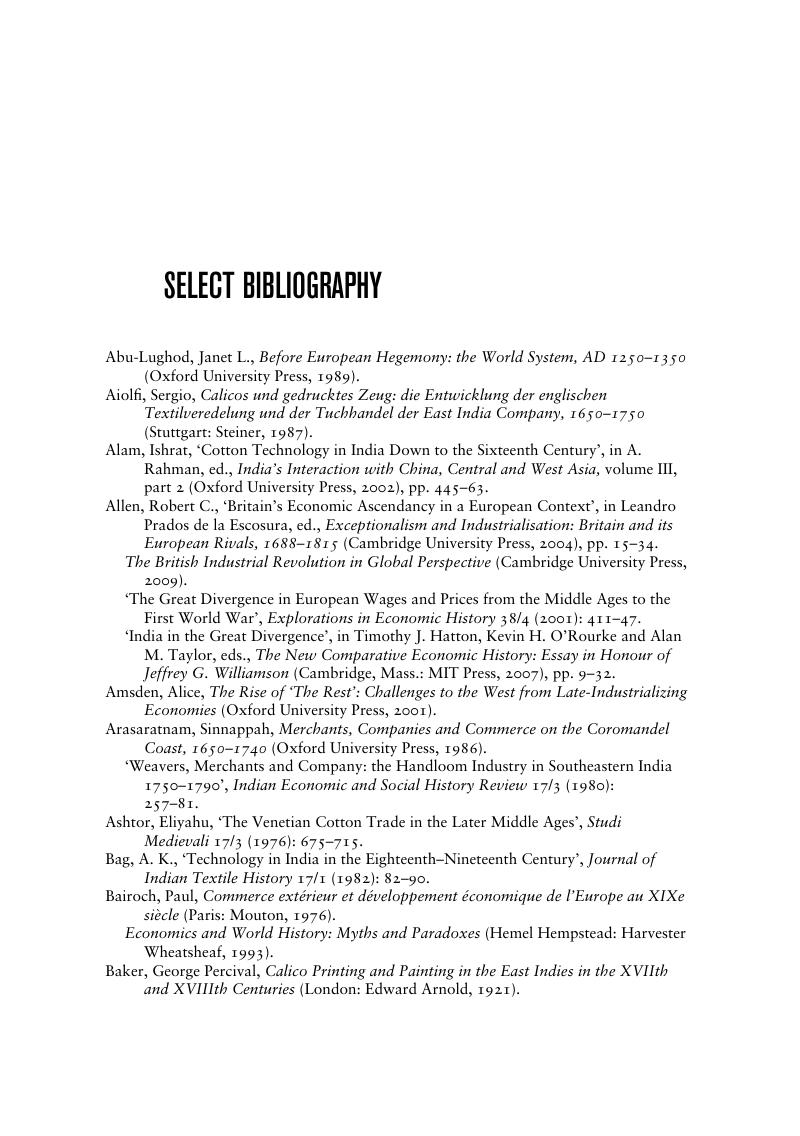Book contents
- Frontmatter
- Contents
- List of figures and colour plates
- List of Maps
- List of Tables
- Preface
- Abbreviations
- 1 Introduction: global cotton and global history
- Part I The first cotton revolution: a centrifugal system, circa 1000–1500
- Part II Learning and connecting: making cottons global, circa 1500–1750
- Part III The second cotton revolution: a centripetal system, circa 1750–2000
- Notes
- Select bibliography
- Index
- Plate Section
- References
Select bibliography
Published online by Cambridge University Press: 18 December 2013
- Frontmatter
- Contents
- List of figures and colour plates
- List of Maps
- List of Tables
- Preface
- Abbreviations
- 1 Introduction: global cotton and global history
- Part I The first cotton revolution: a centrifugal system, circa 1000–1500
- Part II Learning and connecting: making cottons global, circa 1500–1750
- Part III The second cotton revolution: a centripetal system, circa 1750–2000
- Notes
- Select bibliography
- Index
- Plate Section
- References
Summary

- Type
- Chapter
- Information
- CottonThe Fabric that Made the Modern World, pp. 371 - 394Publisher: Cambridge University PressPrint publication year: 2013



